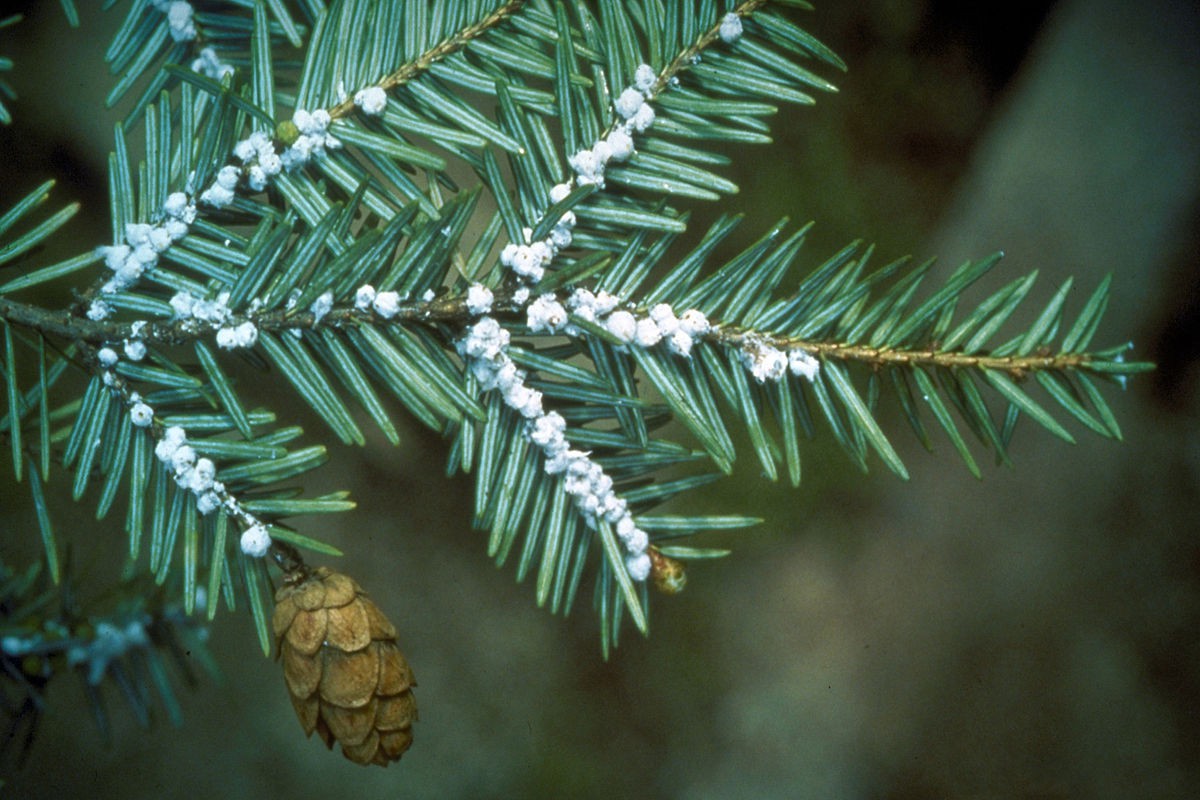Hemlock Conservation Legacy Fund
Registered Name: FEDERATION OF NOVA SCOTIA NATURALISTS
Business No: 891266744RR0001
This organization is designated by Canada Revenue Agency (CRA) as a registered charity. They comply with the CRA's requirements and has been issued a charitable registration number.

11 months to go
The issue: Hemlock in peril
Tall dark eastern hemlocks were a defining feature of forests in Mi'kma'ki for thousands of years, forming large stretches of shady old growth tracts. With individual hemlock living more than 400 years, they demonstrate their rugged capacity to withstand the tests of time. Yet they are dying rapidly from of a tiny invasive insect, hemlock woolly adelgid (HWA) that sucks tree sap and starves hemlocks of food and water.
The ecological role of hemlocks is tightly connected to the health of both aquatic and forest ecosystems. Streams flowing under shaded hemlocks are cooled, fostering a more stable habitat to salmon and trout, while massive tree roots and trunks on steep banks slow erosion and intercept runoff, stabilizing stream flow. Dense protective hemlock canopies extend shelter to wildlife unlike any other tree in the Wabanaki-Acadian forest, providing refuge from intense heat, extreme cold, deep snows, and ice storms.
A strategy to conserve hemlock-
Treatment of individual hemlocks with a specialized insecticide is a well proven long-term strategy and is beginning to be implemented in NS, benefiting from decades of research in USA. In the short-term, small amounts of these chemicals are injected directly into the tree's lower trunk, using the tree's own biology and the flow in sap to control populations of HWA feeding in the tree canopy.
A single chemical treatment allows hemlock to thrive for 4-7 years before requiring retreatment. This buys time for implementation of a biocontrol program where HWA predator populations (a tiny beetle and a silver fly, both native to western Canada) build sufficient numbers to control HWA populations without further aid of chemicals. The stop gap intervention that chemical treatments buy may also allow the forest to find more ways to naturally adapt to this newcomer.
The provincial government has embraced conservation of hemlocks on public lands through a new chemical treatment program in Protected Areas, using Federal Environment and Climate Change funding. Actions to save these last giants require substantial funding and rapid action due to the pace that hemlocks are dying. Hundreds of landowners are asking for assistance to save their hemlock trees where none currently exists. Nature Nova Scotia may help to provide some financial assistance through a new ‘Hemlock Conservation Trust’ to the growing numbers of concerned landowners who are requesting help in saving high-value hemlocks but cannot afford to save much on their own.
Fund Objective: Fund chemical treatments for hemlock trees under threat of mortality from the invasive hemlock woolly adelgid (HWA) across Nova Scotia. Funds would treat high-value hemlocks on private lands and/or riparian hemlocks that would otherwise be left untreated and die.
Timeline: Fundraising - Summer 2023 - Summer 2025, Treatments - Seasonally starting in 2023-2024
Progress to Date: We hosted two treatments days in the fall of 2024 where volunteers treated hundreds of hemlocks along two important riparian zones in southwest Nova Scotia. We nearly met our fundraising goal that year and are hoping to raise another $10,000 in 2025, allowing us to treat thousands more trees on private lands.
Donors are invited to follow our donation structure below or donate as they can:
"Individual" or "Honour A Loved One" donors - Save a single hemlock tree
$ 25.00
"Family" donors - Save a grouping of several trees
$ 100.00
"Salmon and Trout" donors - Conserve many hemlocks lining salmon or trout pools or streams
$ 500.00
"Old Growth" donors - Protect an old growth hemlock forest glen, saving many trees that can provide cover for wildlife
$ 1000.00
All other donations welcome and appreciated.
Donate to this campaign
Give in honour or send an ecard (optional)


